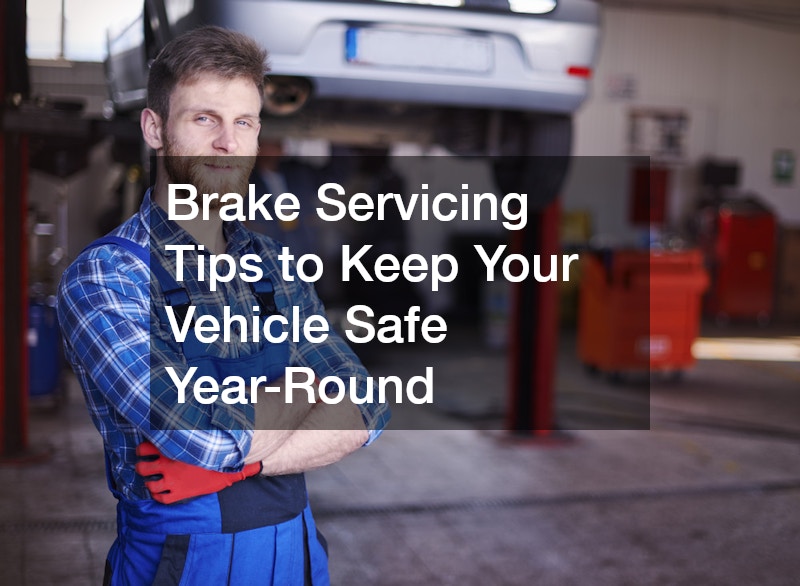Regular maintenance is essential for ensuring the safety and reliability of your vehicle and one of the most critical areas that require attention is the braking system. Whether you’re navigating rainy winter roads or driving long distances in the summer heat, properly functioning brakes are your first line of defence against accidents. This article outlines practical brake servicing tips to help Australian drivers maintain optimal safety and performance throughout the year.
Understanding the Importance of Brake Services
This involves the inspection, maintenance and repair of the components within a vehicle’s braking system. These components include brake pads, rotors, calipers, brake fluid and the brake lines themselves.
Like all vehicle systems, your brakes experience wear and tear over time, particularly due to harsh driving conditions, stop-and-go traffic or carrying heavy loads.
Neglecting brake maintenance can lead to decreased performance, increased stopping distance and even total brake failure. By adhering to regular brake maintenance routines, you can protect yourself, your passengers and other road users while also extending the life of your vehicle.
Tip 1: Schedule Routine Brake Inspections
One of the most effective ways to ensure your brakes remain in top condition is to schedule routine inspections. A licensed mechanic should examine your braking system at least every six months or during regular service intervals. They will check for signs of wear on brake pads and discs, test brake fluid levels and assess the overall performance of the system.
In Australia, where seasonal driving conditions can vary significantly, it’s a good idea to book an inspection before winter and summer. These checks can identify issues before they become serious, helping you avoid unexpected breakdowns.
Tip 2: Know the Warning Signs
Understanding the warning signs of brake trouble can help you catch problems early. If you hear a high-pitched squealing noise when applying the brakes, it often indicates worn brake pads. A grinding sound might mean the pads are completely worn and the metal parts of the brake are contacting each other. Other warning signs include a spongy or soft brake pedal, vibrations when braking or the vehicle pulling to one side.
If you experience any of these issues, book a brake servicing appointment immediately. Prompt attention can prevent more costly repairs and ensure your vehicle remains roadworthy.
Tip 3: Replace Brake Pads & Discs on Time
Brake pads don’t last forever. Most need replacement every 50,000 kilometres, though this can vary depending on your driving habits and vehicle type. If you do a lot of city driving or tow trailers, your pads may wear out faster. Similarly, brake discs should be checked for wear and warping.
Using original equipment manufacturer (OEM) parts or high-quality aftermarket components ensures consistent performance. Replacing pads and discs at the recommended intervals is a key part of preventive maintenance and contributes to overall vehicle safety.
Tip 4: Check & Replace Brake Fluid Regularly
Brake fluid is essential for transferring the force from your foot on the pedal to the brake components. Over time, brake fluid absorbs moisture, which reduces its effectiveness and can corrode internal components. Most vehicle manufacturers recommend replacing brake fluid every two years, but always refer to your vehicle’s manual.
During servicing, ask your mechanic to perform a brake fluid flush and refill if necessary. Clean brake fluid ensures responsive braking and helps maintain the integrity of the system in both hot and cold temperatures.
Tip 5: Drive Smart to Preserve Your Brakes
While mechanical servicing is crucial, your driving habits also impact the longevity of your brakes. Avoid riding the brake pedal, especially when driving downhill. Instead, shift to a lower gear to control your speed. Try to coast to a stop whenever possible rather than braking harshly at the last minute.
By adopting smoother driving techniques, you can reduce the stress on your braking system and prolong the life of brake pads and discs, especially during the demanding summer months or wet winter days.
Tip 6: Don’t Ignore the Dashboard Warning Lights
Modern vehicles are equipped with brake warning lights that illuminate when there’s a problem. If you see the brake system warning light or ABS (Anti-lock Braking System) light, don’t delay in getting the issue checked. These alerts indicate that your vehicle’s onboard systems have detected a fault that could compromise your safety.
Brake Maintenance for Peace of Mind

Maintaining your brakes is not just about passing a safety inspection—it’s about ensuring your vehicle can respond effectively when you need it most. From school drop-offs and weekend getaways to unpredictable weather and high-speed travel, safe braking is vital in every driving condition.
Investing time and effort into regular brake servicing pays off with enhanced vehicle control, reduced repair costs and greater peace of mind.
